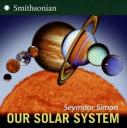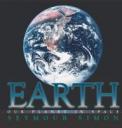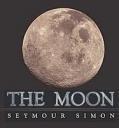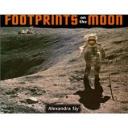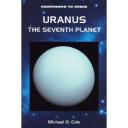Introduction
The topic of space can be interesting and even thrilling when presented in the correct manner. In the fourth grade students are learning about our solar system. They will learn about the planets that revolve around the sun, including their order, size, and properties. They will also study the relationships between the sun, the earth, and the moon. The most important vocabulary terms for this SOL (4.7) are revolution and rotation.
Books
Our Solar System by Seymour Simon
Seymour Simon is an award winning author who worked with the Smithsonian Institution to create a newly revised book on space. Our Solar System is the perfect introductory book for students as they begin learning about space. The book is filled with gorgeous pictures taken from space. They images will captivate the young audience and intrigue them, pushing them to learn further. Each of the 8 planets receives a brief introduction. While this book does not give incredibly detailed lessons on the planets, it piques students’ curiosity.
Earth: Our Planet in Space by Seymour Simon
Another book by Seymour Simon, Earth: Our Planet in Space explores our Earth, Sun and Moon. As students study the planets, they will inevitably question “why isn’t there life on other planets.” This book delves into the unique position of our earth in space, and the reasons why we can survive here, why there is day and night, and much more. Stunning photography keeps students interested as they read the information.
The Moon by Seymour Simon
Introductory facts about our moon are set off by newly colored photographs (the first edition from 1984 was black and white). Students will enjoy learning new things about the moon. This book is a perfect way to start a lesson. It’s easy to read alone or with a friend before delving into a classroom discussion.
Footprints on the Moon by Alexandra Siy
Filled with humorous quotes from astronauts, and interesting accounts from previous apollo missions, Footprints on the Moon gives students their first introduction to space exploration. It gives students a brief history of rocketry, and inspires the idea that there is still so much to discover about our universe.
Uranus – the Seventh Planet by Michael D. Cole
Uranus – the Seventh Planet is part of a series that explores every planet in our solar system. Each book takes students through the features, sizes and moons of each planet. Close up pictures gives students a sense of the magnitude, beauty, and mystery that surround the planets.
Teacher Resources
Think of fun lessons and hands on activities to use as you explore space with you class. This site offers lesson plans for activities that will get students directly involved. On the left side-bar, click on any of the outer space subjects that you want to focus on for the class.
This resource lets you explore each planet. It gives teachers a brief overview of the planets, with fun facts and important details to share with the class. The website is perfect for a quick review before creating or teaching a lesson.
Another resource shows teachers how to make homemade craters with their class. This is a great activity for fourth graders; they can get a little messy, while still understanding the “impact” that craters make, and utilizing their math skills.
This resource gives teacher’s ideas for livening up the classroom. It features lesson ideas, as well as fun activities and projects to do as a class.
Resources for Kids
Discover what will be in tonight’s sky. A short video clip will show students where they can find certain constellations and planets in the sky. The video will be relevant for whatever date they view it on.
Students will love competing in the Moon Olympics. This game shows students how gravity effects our lives. In a silly and fun way, students can discover what sports would be like in space.
Students can complete this puzzle to show that they know the order and location of the planets in our solar system.
This memory/matching game asks students to match the picture of an object with its vocabulary term.
This interactive website gives student the basic important facts about each of the 9 planets (it includes Pluto) and our sun. The resource is easy to read, interesting, and animated to keep the students focused.


